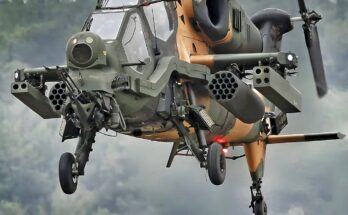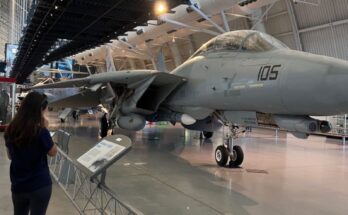
Few aircraft in modern history have generated as much debate, controversy, and admiration as the Lockheed Martin F-35 Lightning II. Heralded as the future of aerial dominance, the F-35 program has often been criticized as one of the most expensive defense projects ever undertaken. With a price tag surpassing $1.7 trillion over its lifetime, questions remain: is the F-35 a monumental blunder, or will history remember it as a revolutionary leap in air combat?
A New Era of Stealth and Networking
The F-35 was designed with one overarching goal: to ensure U.S. and allied air superiority well into the 21st century. Unlike previous fighters that prioritized speed or maneuverability, the F-35 emphasizes stealth, situational awareness, and advanced networking capabilities. Its radar-evading design, fused with powerful sensors, allows it to act not just as a fighter, but as a battlefield information hub. This means the F-35 can share targeting data with ships, ground forces, and other aircraft, multiplying its value beyond dogfights.
The Criticism: Cost and Compromise
Critics argue that the F-35’s ambitious “one jet fits all” approach—serving the Air Force, Navy, and Marine Corps—forced compromises that diluted performance. For example, its single engine design limits speed compared to twin-engine rivals like the F-22 or Su-35. Maintenance and software issues have also plagued the fleet, raising concerns about reliability. Some pilots claim the jet lacks the raw maneuverability of older fighters, which could leave it vulnerable in close-range combat.
Most contentious of all is the cost. The F-35 program is projected to be the most expensive weapon system in history, leading detractors to brand it a boondoggle that siphoned resources from other defense priorities. For them, the jet symbolizes bureaucracy and inefficiency more than innovation.
The Case for a Revolution
Supporters counter that critics are looking at the F-35 through an outdated lens. Dogfights, they argue, are relics of the past. In modern warfare, whoever detects and shoots first usually wins. By that standard, the F-35’s advanced radar, electronic warfare capabilities, and stealth profile make it nearly unbeatable. Furthermore, continuous upgrades in software and weapon integration mean the jet will only get smarter and deadlier over time.
Its multinational adoption also points to its influence: more than a dozen U.S. allies, from Japan to the United Kingdom, are flying the Lightning II. This interoperability strengthens alliances and ensures the U.S. maintains technological dominance across the globe.
How Will History Judge the F-35?
The final verdict on the F-35 may not be clear for decades. If future wars see it perform as intended—evading detection, neutralizing threats, and coordinating battles with unmatched efficiency—it could be remembered as the fighter that redefined air combat. On the other hand, if rivals develop counters to stealth or field cheaper, more agile drones, the F-35 might be remembered as an overpriced gamble.
Ultimately, the F-35 embodies the paradox of modern military technology: staggering cost, immense complexity, but potentially game-changing power. Whether blunder or revolution, it will remain one of the most iconic—and controversial—aircraft of the 21st century.


